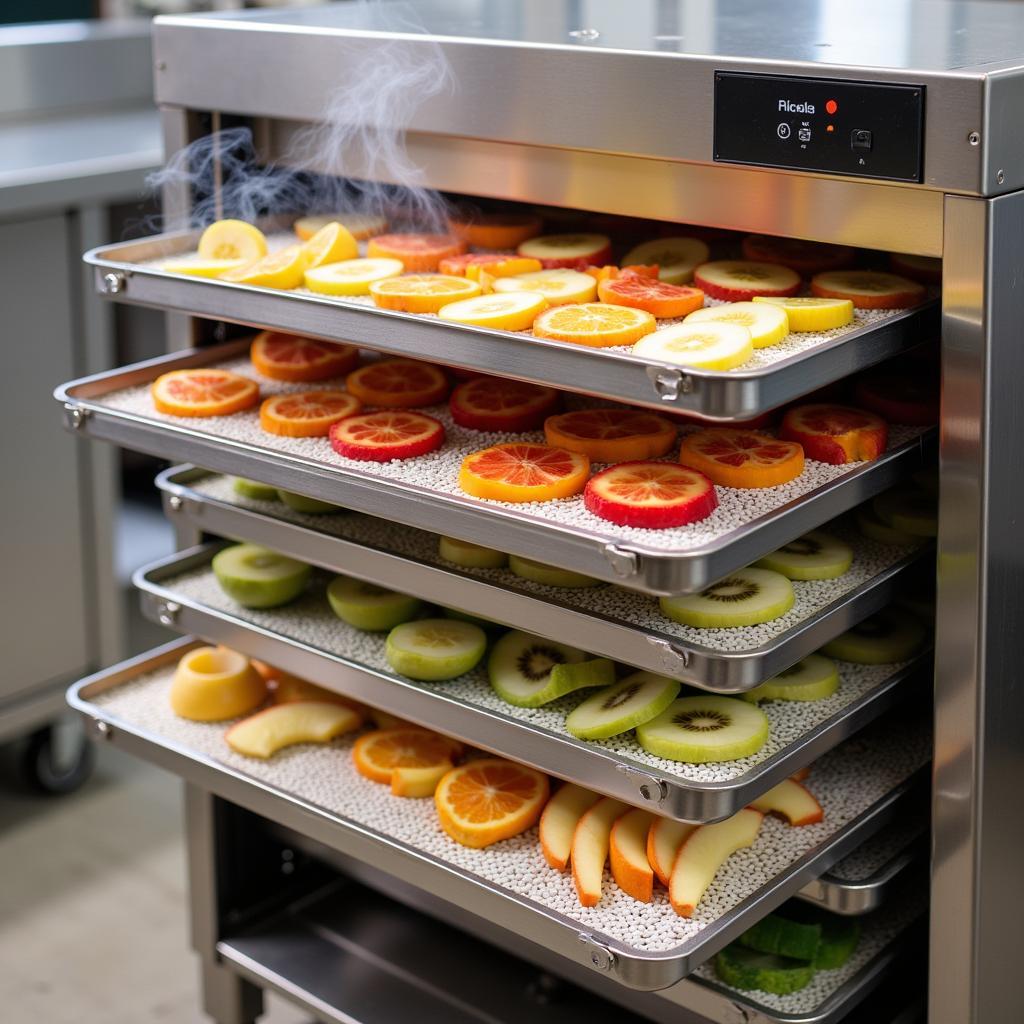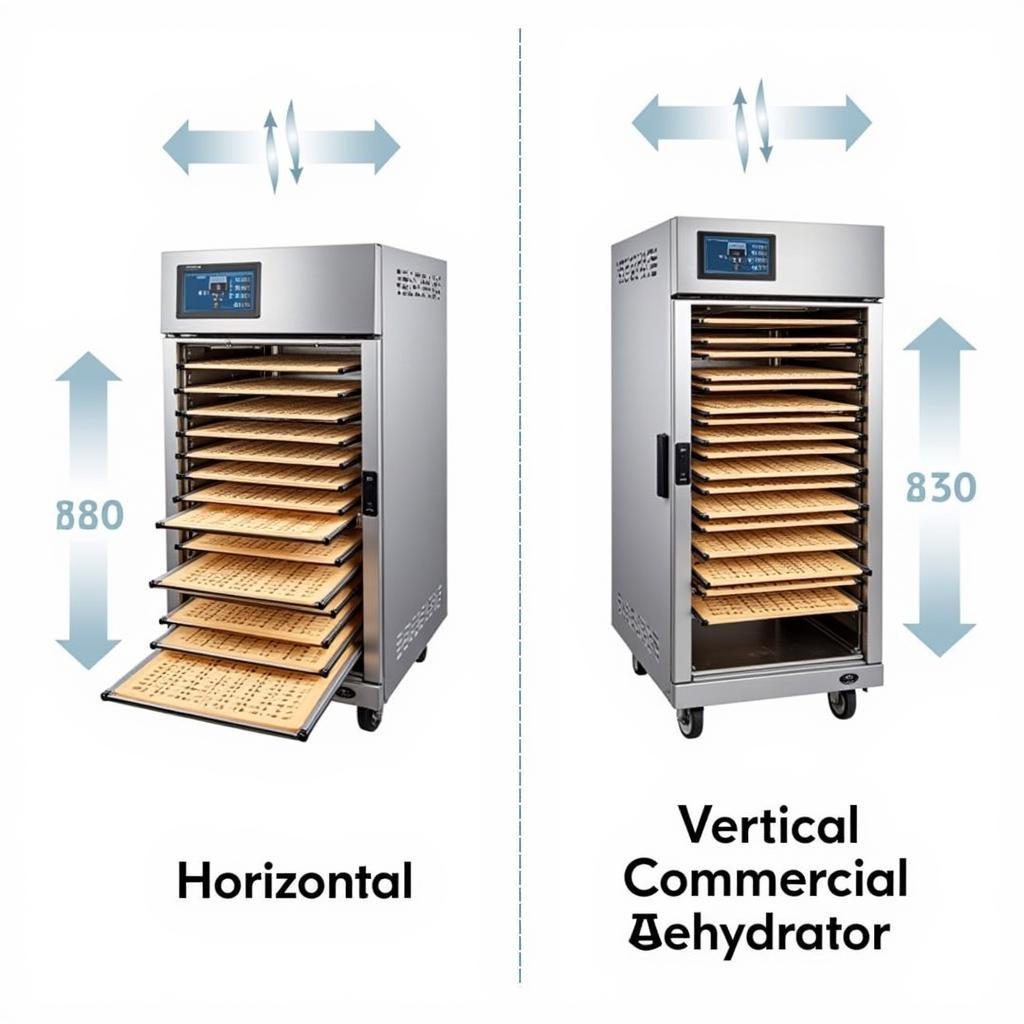A Commercial Food Dehydrator is more than just a kitchen appliance; it’s a gateway to culinary innovation, preservation, and profit. Whether you’re a budding entrepreneur, a seasoned food truck operator, or a passionate home chef with big dreams, understanding the power of these machines can transform your relationship with food. Let’s delve into the world of commercial food dehydration and discover how it can elevate your culinary endeavors. For those interested in outfitting a food truck, explore our selection of food trucks for sale in Minnesota.
What is a Commercial Food Dehydrator?
Commercial food dehydrators are designed for high-volume food preservation. Unlike their home counterparts, these robust machines offer greater capacity, consistent temperature control, and faster drying times. They’re ideal for businesses looking to create dried fruits, vegetables, jerky, herbs, and even pet treats on a larger scale. Investing in a commercial food dehydrator is a strategic move for businesses prioritizing efficiency and quality. This makes them perfect for restaurants, catering companies, and food manufacturers. Thinking about preserving food for long-term storage? Consider dehydrated food for storage.
What are the benefits of using a commercial food dehydrator? They allow for large batch processing, consistent results, and precise temperature control. These machines are built for durability and can withstand heavy use. Commercial dehydrators are also incredibly versatile, allowing for the preservation of a wide variety of foods.
 Commercial Food Dehydrator Drying Fruits and Vegetables
Commercial Food Dehydrator Drying Fruits and Vegetables
Choosing the Right Commercial Food Dehydrator
Selecting the perfect commercial food dehydrator requires careful consideration of several factors. Capacity is crucial, determine how much food you need to dehydrate at once. Temperature control is essential for consistent results, look for models with adjustable thermostats. Airflow is key for even drying, consider horizontal or vertical airflow depending on your needs. Ease of cleaning is important for maintaining hygiene standards. A commercial food dehydrator is an investment in your business, choose wisely.
What are the different types of commercial food dehydrators available? There are primarily two types: horizontal airflow and vertical airflow. Horizontal airflow models distribute air evenly across all trays, resulting in consistent drying. Vertical airflow models are generally more compact and affordable, but may have slight variations in drying time between trays.
 Comparing Horizontal and Vertical Airflow Commercial Food Dehydrators
Comparing Horizontal and Vertical Airflow Commercial Food Dehydrators
Maximizing Your Commercial Food Dehydrator’s Potential
Once you’ve invested in a commercial food dehydrator, maximizing its potential is key to optimizing your investment. Consistent use and proper maintenance will ensure its longevity and efficiency. Experiment with different foods and recipes to explore the full range of possibilities. Proper storage of dehydrated foods is crucial for preserving their quality and extending their shelf life. Consider vacuum sealing or airtight containers to maintain freshness.
How can you ensure even drying in a commercial food dehydrator? Properly preparing the food is key. Slice items evenly and arrange them in a single layer on the trays. Rotating trays during the drying process can also help ensure even dehydration, especially in vertical airflow models. Monitoring the temperature and adjusting it as needed will also contribute to consistent results. For information on standard food tray dimensions, check out our guide.
 Tips for Using a Commercial Food Dehydrator Effectively
Tips for Using a Commercial Food Dehydrator Effectively
Conclusion
A commercial food dehydrator empowers you to unlock new levels of culinary creativity and efficiency. From preserving seasonal harvests to creating unique and profitable products, these machines offer endless possibilities. By understanding the different types, features, and best practices, you can make an informed decision and maximize your investment. A commercial food dehydrator is a valuable asset for any business looking to expand its culinary horizons. For those preparing for emergencies, dehydrated food emergency options are a must-read. Learn more about commercial food dehydrators on our dedicated page: food dehydrator commercial.
FAQ
- What is the average lifespan of a commercial food dehydrator?
- How do I clean and maintain my commercial food dehydrator?
- What types of foods can I dehydrate in a commercial dehydrator?
- How do I store dehydrated food properly?
- What are the key differences between horizontal and vertical airflow models?
- How can I troubleshoot common issues with my commercial food dehydrator?
- What safety precautions should I take when using a commercial food dehydrator?
Scenarios
- Scenario 1: A small business owner wants to expand their product line by offering dehydrated fruit snacks. They need a commercial food dehydrator that can handle large batches of fruit efficiently.
- Scenario 2: A restaurant chef is looking to dehydrate herbs and spices to create unique flavor profiles for their dishes. They need a dehydrator that offers precise temperature control.
- Scenario 3: A food truck operator wants to offer dehydrated jerky and other snacks. They need a compact and portable dehydrator that is easy to transport and clean.
Further Reading
- Learn more about commercial food dehydrators on our website: food dehydrator commercial
- Explore food tray dimensions to optimize your dehydrator use: food tray dimensions
For assistance, contact us at Phone Number: 02437655121, Email: [email protected] or visit us at 3PGH+8R9, ĐT70A, thôn Trung, Bắc Từ Liêm, Hà Nội, Việt Nam. We have a 24/7 customer service team.